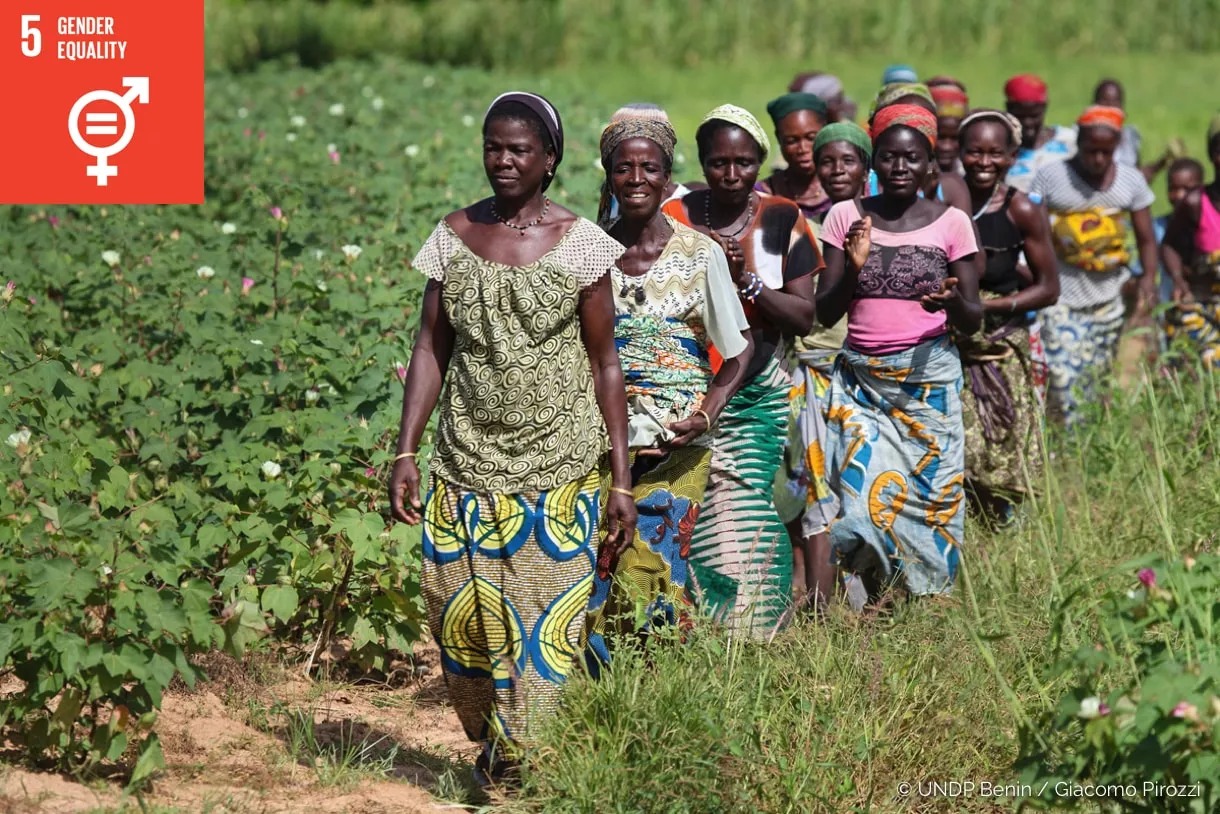Ending all forms of discrimination against women and girls is not only a basic human right, but it also crucial to accelerating sustainable development. It has been proven time and again, that empowering women and girls has a multiplier effect, and helps drive up economic growth and development across the board.
Since 2000, UNDP, together with our UN partners and the rest of the global community, has made gender equality central to our work. We have seen remarkable progress since then. More girls are now in school compared to 15 years ago, and most regions have reached gender parity in primary education. Women now make up to 41 percent of paid workers outside of agriculture, compared to 35 percent in 1990.
The SDGs aim to build on these achievements to ensure that there is an end to discrimination against women and girls everywhere. There are still huge inequalities in the labour market in some regions, with women systematically denied equal access to jobs. Sexual violence and exploitation, the unequal division of unpaid care and domestic work, and discrimination in public office, all remain huge barriers.
Affording women equal rights to economic resources such as land and property are vital targets to realizing this goal. So is ensuring universal access to sexual and reproductive health. Today there are more women in public office than ever before, but encouraging women leaders will help strengthen policies and legislation for greater gender equality.
Gender equality is not only a fundamental human right, but a necessary foundation for a peaceful, prosperous and sustainable world.
There has been progress over the last decades: More girls are going to school, fewer girls are forced into early marriage, more women are serving in parliament and positions of leadership, and laws are being reformed to advance gender equality.
Despite these gains, many challenges remain: discriminatory laws and social norms remain pervasive, women continue to be underrepresented at all levels of political leadership, and 1 in 5 women and girls between the ages of 15 and 49 report experiencing physical or sexual violence by an intimate partner within a 12-month period.
The effects of the COVID-19 pandemic could reverse the limited progress that has been made on gender equality and women’s rights. The coronavirus outbreak exacerbates existing inequalities for women and girls across every sphere — from health and the economy, to security and social protection.
Women play a disproportionate role in responding to the virus, including as frontline healthcare workers and carers at home. Women’s unpaid care work has increased significantly as a result of school closures and the increased needs of older people. Women are also harder hit by the economic impacts of COVID-19, as they disproportionately work in insecure labour markets. Nearly 60 per cent of women work in the informal economy, which puts them at greater risk of falling into poverty.
The pandemic has also led to a steep increase in violence against women and girls. With lockdown measures in place, many women are trapped at home with their abusers, struggling to access services that are suffering from cuts and restrictions. Emerging data shows that, since the outbreak of the pandemic, violence against women and girls — and particularly domestic violence — has intensified.
COVID-19 response
“Limited gains in gender equality and women’s rights made over the decades are in danger of being rolled back due to the COVID-19 pandemic,” the UN Secretary-General said in April 2020, urging governments to put women and girls at the centre of their recovery efforts.
Women are not only the hardest hit by this pandemic, they are also the backbone of recovery in communities. Putting women and girls at the centre of economies will fundamentally drive better and more sustainable development outcomes for all, support a more rapid recovery, and place the world back on a footing to achieve the Sustainable Development Goals.
Every COVID-19 response plans, and every recovery package and budgeting of resources, needs to address the gender impacts of this pandemic. This means: (1) including women and women’s organizations in COVID-19 response planning and decision-making; (2) transforming the inequities of unpaid care work into a new, inclusive care economy that works for everyone; and (3) designing socio-economic plans with an intentional focus on the lives and futures of women and girls.
UN Women has developed a rapid and targeted response to mitigate the impact of the COVID-19 crisis on women and girls and to ensure that the long-term recovery benefits them, focused on five priorities:
- Gender-based violence, including domestic violence, is mitigated and reduced
- Social protection and economic stimulus packages serve women and girls
- People support and practise equal sharing of care work
- Women and girls lead and participate in COVID-19 response planning and decision-making
- Data and coordination mechanisms include gender perspectives
The COVID-19 pandemic provides an opportunity for radical, positive action to redress long-standing inequalities in multiple areas of women’s lives, and build a more just and resilient world.
View Goal Target
- End all forms of discrimination against all women and girls everywhere
- Eliminate all forms of violence against all women and girls in the public and private spheres, including trafficking and sexual and other types of exploitation
- Eliminate all harmful practices, such as child, early and forced marriage and female genital mutilation
- Recognize and value unpaid care and domestic work through the provision of public services, infrastructure and social protection policies and the promotion of shared responsibility within the household and the family as nationally appropriate
- Ensure women’s full and effective participation and equal opportunities for leadership at all levels of decisionmaking in political, economic and public life
- Ensure universal access to sexual and reproductive health and reproductive rights as agreed in accordance with the Programme of Action of the International Conference on Population and Development and the Beijing Platform for Action and the outcome documents of their review conferences
- Undertake reforms to give women equal rights to economic resources, as well as access to ownership and control over land and other forms of property, financial services, inheritance and natural resources, in accordance with national laws
- Enhance the use of enabling technology, in particular information and communications technology, to promote the empowerment of women
- Adopt and strengthen sound policies and enforceable legislation for the promotion of gender equality and the empowerment of all women and girls at all levels
Fact & Figure
- Globally, 750 million women and girls were married before the age of 18 and at least 200 million women and girls in 30 countries have undergone FGM.
- The rates of girls between 15-19 who are subjected to FGM (female genital mutilation) in the 30 countries where the practice is concentrated have dropped from 1 in 2 girls in 2000 to 1 in 3 girls by 2017.
- In 18 countries, husbands can legally prevent their wives from working; in 39 countries, daughters and sons do not have equal inheritance rights; and 49 countries lack laws protecting women from domestic violence.
- One in five women and girls, including 19 per cent of women and girls aged 15 to 49, have experienced physical and/or sexual violence by an intimate partner within the last 12 months. Yet, 49 countries have no laws that specifically protect women from such violence.
- While women have made important inroads into political office across the world, their representation in national parliaments at 23.7 per cent is still far from parity.
- In 46 countries, women now hold more than 30 per cent of seats in national parliament in at least one chamber.
- Only 52 per cent of women married or in a union freely make their own decisions about sexual relations, contraceptive use and health care.
- Globally, women are just 13 per cent of agricultural land holders.
- Women in Northern Africa hold less than one in five paid jobs in the non-agricultural sector. The proportion of women in paid employment outside the agriculture sector has increased from 35 per cent in 1990 to 41 per cent in 2015.
- More than 100 countries have taken action to track budget allocations for gender equality.
- In Southern Asia, a girl’s risk of marrying in childhood has dropped by over 40% since 2000.



